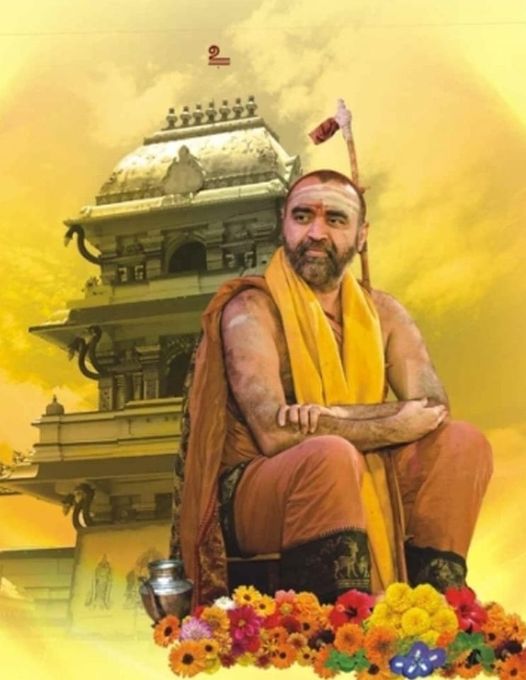
In the case of the Sankarite Institution at Kanchi where Sankara spent the last lap of his earthly career, according to at least seven important literary works giving information about the life story of Sankaracarya, it seems that only recently the name of Kanchi has been tagged.
Looking back at the history of this institution of the recent and remote past, it is learnt that successive heads of this Sankarite Institution have been known only by the name ‘Sankaracarya’.
In the case of other mutts it is found that they are referred to along with the name of the locality wherein the particular Mutt is situated, as for instance the ‘Puri Mutt’, ‘Vanamamalai Mutt’ etc.
In almost all old records pertaining to the Sankara Matha a Kanchipuram, the Mutt is noted simply as ‘Sankaracarya Mutt,’ and the heads of this institution as Sankaracaryas’. Some instances are given below:
1. A copper-plate grant of Vijayaganda Gopala (Andhra Chola ruler) of 1111 A.D., offering lands in the village of Ambi (near Kanchi), to the head of the Sankaracarya Mutt at Kanchi mentions the grantee only as ‘Sankararya Guru’.
2. A copper-plate inscription of the Government Museum, Madras of 1455. A.D., recording the transfer of some rights in the temple at Tiruvotriyur (near Madras), refers to the transferee simply as ‘a camp-follower of Sri Sankaracarya.
3. A firman issued by Daud Khan, a top-ranking officer of the Moghul Court, dated in the 24th regnal year of Padshah Alamgir, (firman renewed twice subsequently and reported in the Historical Records Commission – Vol. xxii pp.72, 73), granting land in circa Dhar Dhara, in the Carnatic province, to the then head of the Badkara Mutt at Kanchi, speaks of the grantee only as ‘Sankarācārya Gossain.”
S. A copper-plate inscription of Vijayaranga Chokkanatha Nayak King of Madurai, dated 1708 A.D., makes mention of land offerings and of rice etc., in favour of the Mutt (existing from olden times’) at Jambukesvaram (near Tiruchirapalli), belonging to the Sankara Mutt at Kanchi. The lands granted are in the villages of Mahendramangalam, Gopalasvami – thottam, Krishnapuram, Karakkadu, Kondayampettai, Mangamambapuram, Ariyur and Ariyamangalam – all in the Tiruchirapalli district (Tamilnadu). The name of the swami of the Mutt is stated in the grant as ‘Lokaguru Sankaracarya Svami.
5. A firman issued by the Nawab of the Carnatic, in Hijri 1188, conveys an order to the Officials of Subas, to afford safe passage, without collecting tolls, for two camels proceeding from Bunder, the animals having been noted as belonging to ‘Sankaracarya Mutt, without any specification.
6. An order of the English East India Company to the officials of the Company, regarding the tour of the Head of the Mutt (dated in April 1792 A.D.), refers to the Acarya only as ‘The Great Guru Sankaracarya s’vāmi.”
7. A report by Babu Rao, Mahratta Translator, to Colonel Mackenzie, dated 8th & 9th May, 1817. A.D., speaks of the Acarya of the Kanchi Sankara Mutt (who has been met by the translator at Kumbakonam), as the Chief priest of Sankarachari.’ (vide Mackenzie’s Collections by Wilson – 1828- pp. 263, 264).
The evidences given above, prove that the Sankarite Institution at Kanchi has been noted as the Institution of Adya Sankaracarya and his successors in that institution have been and are known to the rulers and people of different times and climes, by the name ‘Sankaracarya’, after the name of the illustrious founder pontiff.
– D. Ramanathan Chettiar
